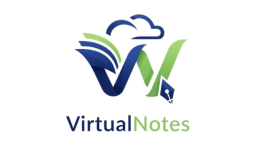Smart Tax Planning: Expert Tips for Individuals & Small Businesses in the US

Tax season can often feel like a stressful sprint, filled with forms, deadlines, and the worry of whether you’ve done everything correctly. However, a proactive approach to managing your taxes throughout the year – known as tax planning – can significantly reduce that stress, potentially lower your tax burden, and help you achieve your financial goals. Whether you’re an individual navigating personal income tax or a small business owner seeking financial efficiency, understanding and implementing effective tax planning strategies is crucial in the United States.
This guide will walk you through essential tax planning tips relevant to the US context, empowering you to take control of your financial well-being and save money on taxes legally and ethically.
What Exactly is Tax Planning and Why Does it Matter in the US? Tax planning is the strategic arrangement of your financial affairs to minimize your tax liability while complying with all applicable tax laws and regulations. It’s not just about frantically gathering documents for April 15th; it’s a continuous process that involves understanding the ever-evolving US tax code, anticipating potential tax obligations, and making informed financial decisions throughout the year.
In the United States, with its complex federal, state, and local tax systems overseen primarily by the Internal Revenue Service (IRS), effective tax management through planning is particularly important for several reasons:
Reducing Your Tax Burden: Smart planning helps you identify eligible tax deductions, tax credits, and tax exemptions that can significantly lower the amount of income subject to tax or directly reduce the amount of tax you owe.
Avoiding Penalties and Interest: Proactive planning helps ensure you meet deadlines for tax payments (like estimated taxes) and filings, thus avoiding costly penalties and interest charges from the IRS.
Improving Cash Flow: By understanding your potential tax obligations in advance, you can better manage your cash flow and avoid unexpected financial strain or large tax bills at year-end.
Facilitating Financial Goals: Effective tax planning can free up more of your income or business profits, allowing you to invest further, save for retirement, or reinvest in your business.
Ensuring Compliance: Staying informed about tax laws and planning accordingly helps you remain compliant with IRS regulations, minimizing the risk of audits and legal issues.
Tax Planning Tips for Individuals in the US: Understand Your Tax Obligations and Filing Status: Familiarize yourself with the different types of federal income tax (and state income tax if applicable in your state). Understand the tax brackets and the rates applicable to your income level. Your filing status (Single, Married Filing Jointly, Head of Household, etc.) significantly impacts your standard deduction and tax rates, so ensure it’s accurate. The IRS website () is your primary resource for the latest tax information.
Maximize Your Deductions: Tax deductions reduce your taxable income. You can choose between the standard deduction or itemizing deductions.
Standard Deduction: A fixed amount based on your filing status. Many taxpayers take this.
Itemized Deductions: If your deductible expenses (like state and local taxes (SALT) up to $10,000, mortgage interest, medical expenses exceeding a certain AGI threshold, and charitable contributions) exceed the standard deduction, you can itemize.
Above-the-Line Deductions: Some deductions reduce your Adjusted Gross Income (AGI) even if you take the standard deduction. These include contributions to traditional IRAs, student loan interest, self-employment taxes, and health savings account (HSA) contributions. Maximize these whenever possible.
Utilize All Eligible Tax Credits: Tax credits are even better than deductions because they directly reduce your tax bill, dollar for dollar. Look into credits you might qualify for:
Child Tax Credit: For qualifying children.
Earned Income Tax Credit (EITC): For low-to-moderate income working individuals and families.
Education Credits: American Opportunity Tax Credit (AOTC) and Lifetime Learning Credit.
Child and Dependent Care Credit: For expenses related to childcare while you work or look for work.
Residential Energy Credits: For energy-efficient home improvements.
Retirement Savings Contributions Credit (Saver’s Credit): For low-to-moderate income individuals contributing to retirement accounts.
Strategize Your Retirement Contributions: Investing in tax-advantaged accounts like 401(k)s and IRAs is a cornerstone of retirement tax planning.
Traditional 401(k)/IRA: Contributions are often pre-tax (tax-deductible), reducing your current taxable income. Taxes are paid when you withdraw in retirement.
Roth 401(k)/IRA: Contributions are made with after-tax money, but qualified withdrawals in retirement are completely tax-free.
Maximize your contributions up to the annual limits to take advantage of these significant tax benefits.
Plan for Capital Gains and Losses: If you invest in stocks, mutual funds, or real estate, managing capital gains and losses is vital for investment tax planning.
Tax Loss Harvesting: Sell investments at a loss to offset capital gains and potentially up to $3,000 of ordinary income.
Long-Term vs. Short-Term Gains: Holding investments for over a year typically qualifies for lower long-term capital gains tax rates.
Optimize Health Savings Accounts (HSAs): If you have a high-deductible health plan, an HSA offers a triple tax advantage: contributions are tax-deductible (or pre-tax), investments grow tax-free, and qualified medical withdrawals are tax-free. It’s an excellent tool for long-term tax planning and healthcare cost management.
Adjust Tax Withholding: Review your W-4 form with your employer to ensure your federal income tax withholding is accurate. Over-withholding means giving the government an interest-free loan; under-withholding can lead to penalties. The IRS Tax Withholding Estimator tool can help.
Maintain Meticulous Records: Keep organized records of all your income, expenses, charitable contributions, investment activities, and other financial transactions throughout the year. This makes filing easier, ensures accuracy, and provides documentation in case of an IRS inquiry.
Tax Planning Tips for Small Businesses & Self-Employed Individuals in the US: Choose the Right Business Structure: Your business entity type (Sole Proprietorship, Partnership, S Corporation, C Corporation, LLC) has significant tax implications. Each has different rules for how income is taxed, how expenses are deducted, and how owners are compensated. Consult with a professional to determine the most tax-efficient structure for your specific business goals.
Track All Business Income and Expenses Diligently: This is the bedrock of small business tax planning. Maintain accurate and detailed records of all your business income and deductible expenses. This is crucial for calculating your taxable profit and claiming all eligible tax deductions. Common business deductions include:
Office rent and utilities
Employee salaries and benefits
Advertising and marketing expenses
Business travel and meals (subject to limits)
Software and subscriptions
Professional development
Depreciation of business assets
Understand Self-Employment Taxes: If you’re a sole proprietor, partner, or independent contractor, you’re responsible for both the employer and employee portions of Social Security and Medicare taxes (self-employment tax). This is typically 15.3% on your net earnings.
Pay Estimated Taxes: The IRS operates on a “pay-as-you-go” system. If you expect to owe at least $1,000 in tax (for individuals) or $500 (for corporations), you’ll likely need to pay estimated taxes quarterly. Plan these payments to avoid underpayment penalties.
Leverage Business Deductions and Credits: Beyond basic expenses, explore specific deductions and credits available to businesses:
Home Office Deduction: If you use a part of your home exclusively for business.
Section 179 Deduction/Bonus Depreciation: Allows you to deduct the full purchase price of qualifying equipment and software in the year it’s purchased, rather than depreciating it over several years.
Qualified Business Income (QBI) Deduction (Section 199A): Allows eligible self-employed individuals and small business owners to deduct up to 20% of their qualified business income.
Business Tax Credits: Research credits for hiring certain groups, R&D, energy efficiency, etc.
Plan for Employee Benefits: If you have employees, consider offering tax-advantaged benefits like retirement plans (SEP IRA, SIMPLE IRA, Solo 401(k)), health insurance, or dependent care assistance, which can be deductible business expenses.
Manage Inventory and Cost of Goods Sold: For businesses selling products, proper inventory management and accurate calculation of the cost of goods sold directly impact your gross profit and thus your taxable income.
Consider Retirement Plans for the Self-Employed: As a small business owner or self-employed individual, you have excellent options for retirement plans (like a Solo 401(k) or SEP IRA) that allow for much larger tax-deductible contributions than a traditional IRA.
Seek Professional Guidance: The US tax code for businesses, especially for different entity types, is incredibly complex. Engaging a qualified tax accountant, CPA, or tax consultant who specializes in small business taxation is highly recommended. They can help you develop tailored tax strategies, ensure compliance, and identify opportunities for tax savings that you might miss.
The Importance of Year-Round Tax Planning Tax planning is not just a stressful annual chore before the filing deadline. Implementing a year-round tax planning approach offers significant advantages:
Early Identification of Opportunities: You can identify potential deductions, credits, or tax-efficient strategies early in the year and take necessary actions before it’s too late.
Better Financial Decision-Making: Understanding the tax implications of your financial decisions throughout the year allows you to make more informed choices, whether it’s buying an asset, making an investment, or changing your business structure.
Reduced Stress During Tax Season: By keeping your records organized and planning proactively, you can significantly reduce the stress and rush associated with last-minute tax preparation.
Potential for Greater Savings: Consistent monitoring and planning can help you uncover more opportunities to lower your tax bill and maximize your refund over time.
Conclusion: Taking Control of Your Taxes in the US Effective tax planning is a vital aspect of sound financial management for both individuals and small businesses across the United States. By understanding the relevant tax laws, claiming all eligible benefits, and seeking professional advice when needed, you can take control of your tax obligations, potentially save money, and work towards achieving your financial goals with greater confidence. Remember to stay informed about the latest tax regulations issued by the IRS and make tax planning an ongoing part of your financial routine.









